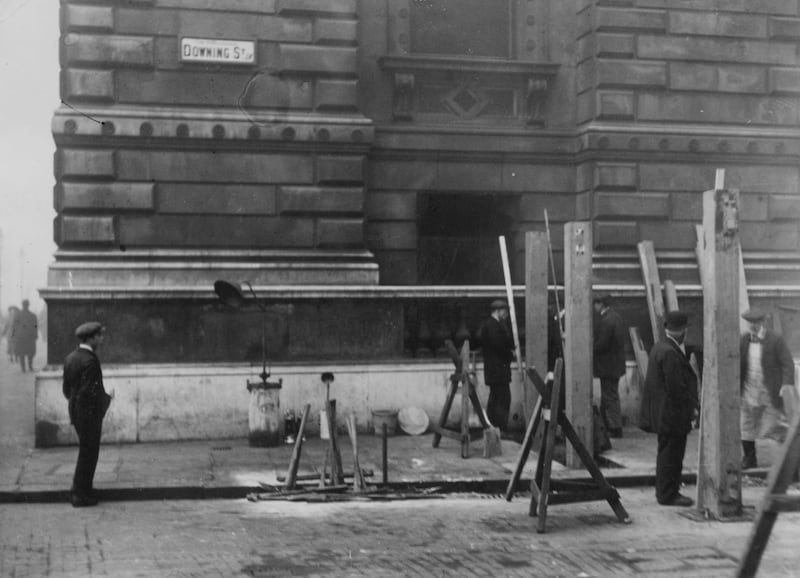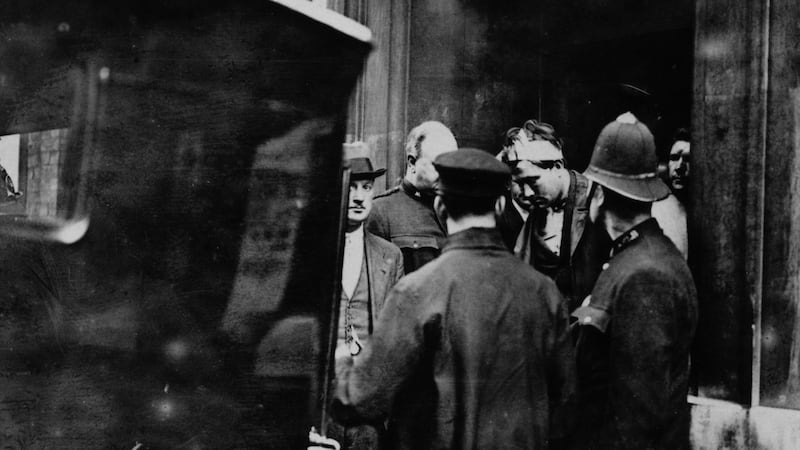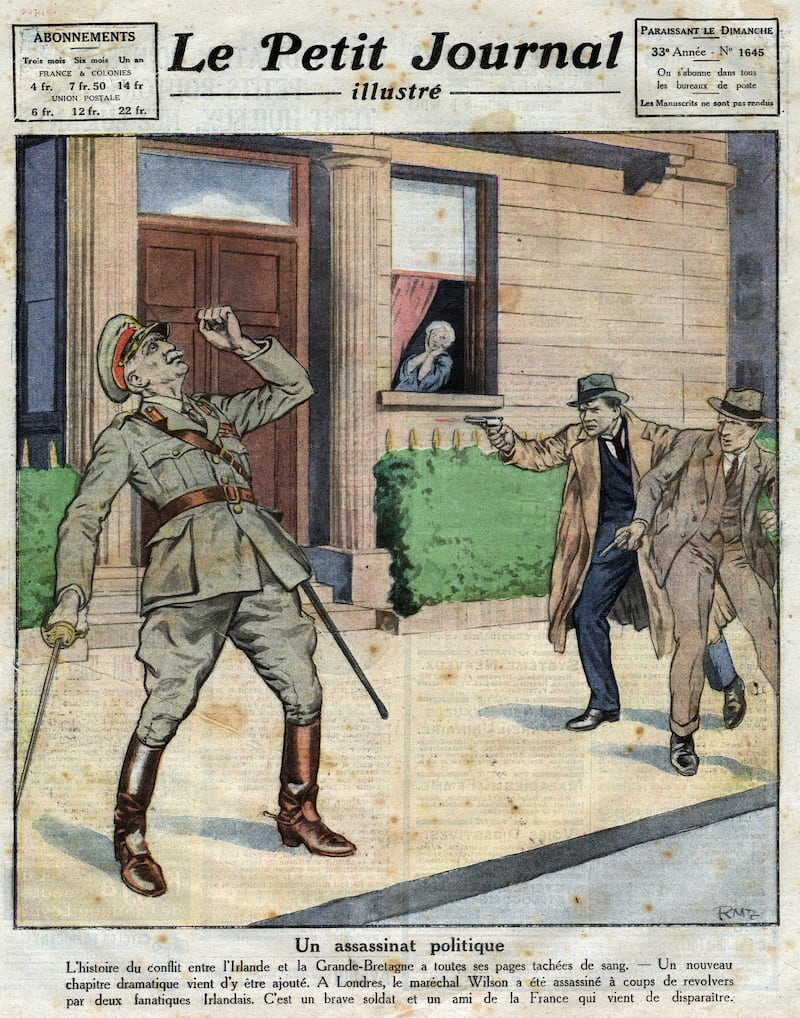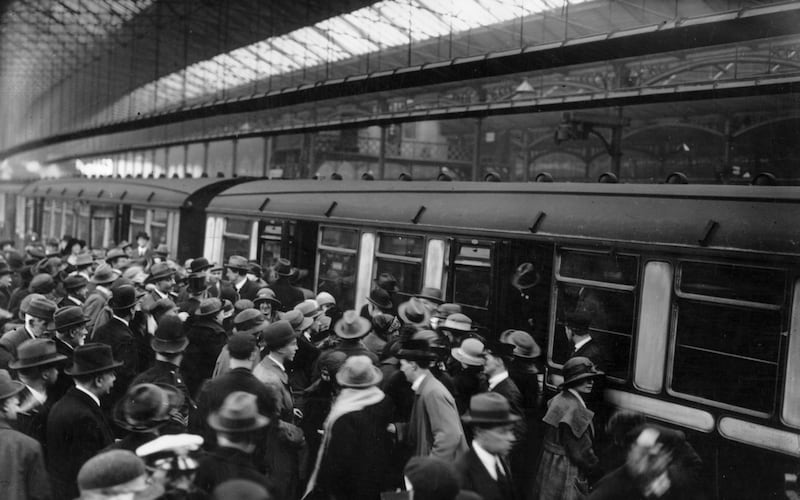On the night of November 27th, 1920, arsonists attacked 41 warehouses and timber yards in Liverpool, an international port city. Running battles occurred between the arsonists and the police, during which a civilian was shot dead. Hundreds of thousands of pounds’ worth of damage was caused.
The arsonists were members of the Liverpool Battalion of the IRA. The incident brought the IRA in Britain to public attention. The organisation, however, had existed in Britain for almost seven years by then.
The IRA, at that time known as the Irish Volunteers, had been founded in Dublin in 1913 to defend Ireland’s right to home rule. Units of the Volunteers were soon established in Glasgow, London, Liverpool, Manchester, and elsewhere in Britain.
As in Ireland, the Volunteers in Britain was infiltrated by the Irish Republican Brotherhood, also known as the Fenians, a secret oath-bound organization dedicated to overthrowing British rule in Ireland. For decades, Fenians in Britain had smuggled arms across the Irish Sea in the hope that they would be used in a rebellion. Gunrunning increased in the lead up to what would become the Easter Rising of 1916.
"Don't fail to be keeping all your eyes open for arms," Michael Collins told a Liverpool Fenian, "... we're awfully short of .45 [revolvers]."

About 100 men and women from Britain, Volunteers and Fenians, some Irish-born, fought in the rebellion, mainly in the Sackville Street area; at least four were killed. In the couple of years after the rebellion, the Volunteer and Fenian organisations were refounded in Britain. They were soon joined by the Cumann na mBan, a republican women’s organisation, and Na Fianna Éireann, the republican boy scouts.
The wider republican support network included organisations such as Sinn Féin and the Irish Self-Determination League of Great Britain, the Gaelic League and the Gaelic Athletic Association.
Irish republicans were only one of many groups in Britain seeking radical change in a Europe in upheaval as a result of the First World War. They rubbed shoulders with nationalists from Africa and Asia and with communists, among others.
As tensions mounted in Ireland, exploding into violence with the beginning of the War of Independence in January 1919, republicans in Britain stepped up their weapons smuggling operation.
If arson attacks were the IRA’s most spectacular activity, gunrunning was their most important. Scarcity of weapons was a perennial problem for the IRA in Ireland. “Don[’]t fail to [be] keeping all your eyes open for arms,” Michael Collins told a Liverpool Fenian, “... we[’]re awfully short of .45 [revolvers].”
Studying the activities of the IRA in Britain provides a window on the bloody birth of independent Ireland from a relatively neglected vantage point
The munitions acquired by Fenians and Volunteers included firearms such as machine guns and rifles, revolvers and pistols, explosives such as gelignite, and ammunition. Sometimes these armaments were purchased from gun shops or on the black market.
Occasionally men recently demobilised from the British army after the end of the Great War proved willing to sell weapons they had brought home as souvenirs. Other times, however, the Volunteers stole the munitions, from army barracks and coal mines, for example. The weapons were then hidden in dumps before being smuggled across the Irish Sea by seafarers specially recruited for the task.
Up to July 1921, when the truce brought hostilities in Ireland to a standstill, records show that at least seven machine guns, 29 rifles, 300 handguns, more than 27,000 rounds of ammunition and almost 500 kg of explosives were smuggled, mainly through Liverpool port.

The arson attacks of November 27th, 1920 heralded the beginning of a campaign of violence that lasted until the truce. The main motive was revenge for the activities of the new and mainly British-born recruits to the police in Ireland, known as the Black and Tans and Auxiliaries.
Violent reprisals carried out by the police in September 1920 in Balbriggan, Co Dublin, and Trim, Co Meath, for example, outraged Volunteers in Britain. “… We believed ‘an eye for an eye’,” stated Liverpool’s Michael O’Leary. Initially, the property targeted in the arson attacks included warehouses, timber yards and factories.
However, as the British police arrested suspects and mounted patrols on high-value targets, the IRA lowered its sights, attacking objects such as the houses of Black and Tans and Auxiliaries, telephone and telegraph lines, and hay stacks. Overall, at least 239 attacks took place, causing two deaths and almost £670,000 worth of damage.
As in Ireland, the republican movement in Britain split on the merits of the Anglo-Irish Treaty of December 1921. Some accepted it, with Liverpool Volunteer John Pinkman loyally standing with Michael Collins. Others, like Pinkman’s comrade Paddy Daly, viewed it as an unacceptable compromise.

The assassination in London of Sir Henry Wilson, an Anglo-Irish Conservative MP and recently retired high-ranking army officer, by members of the capital’s IRA hastened the outbreak of civil war in Ireland as the British government pressed Michael Collins’s government to crush the anti-Treaty republicans.
Men and women from both sides – Treatyite and anti-Treatyite – travelled to Ireland to fight in the civil war. Others stayed in Britain and attempted to aid their chosen cause from there. Anti-Treaty republicans sought to supply their comrades with munitions and they made plans for a new campaign of violence in Britain. However, the authorities in London and Dublin worked together to stymie their activities.

Studying the activities of the IRA in Britain provides a window on the bloody birth of independent Ireland from a relatively neglected vantage point. Republicans in Britain played a noteworthy role in the Easter Rising, the War of Independence and the Civil War, mainly by supplying weapons, by taking part in the fighting in Ireland and mounting attacks in Britain. In this Decade of Centenaries, their contribution deserves to be remembered.
The IRA in Britain, 1919-1923: "In the Heart of Enemy Lines" by Gerard Noonan is published by Liverpool Univerrsity Press









